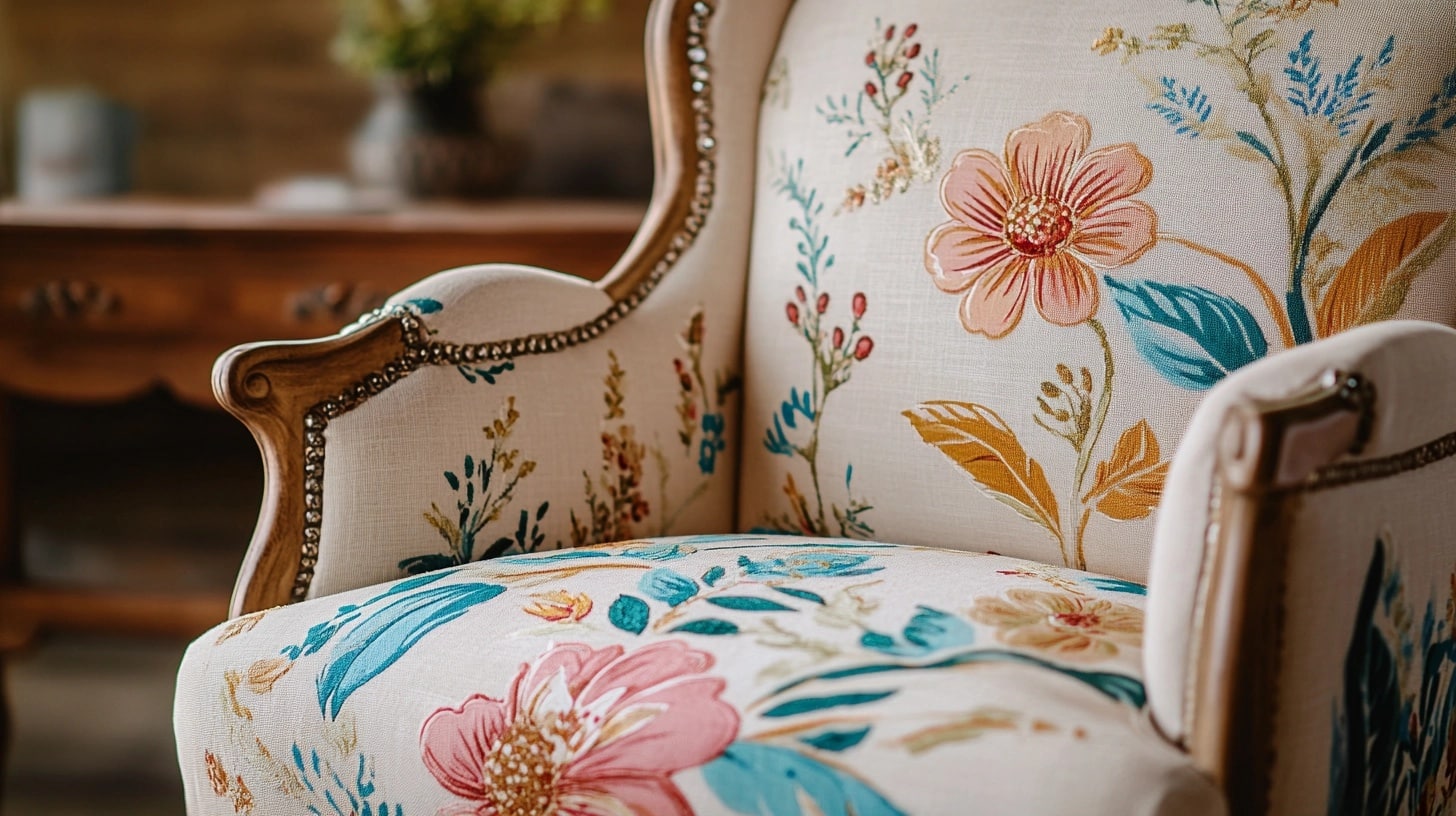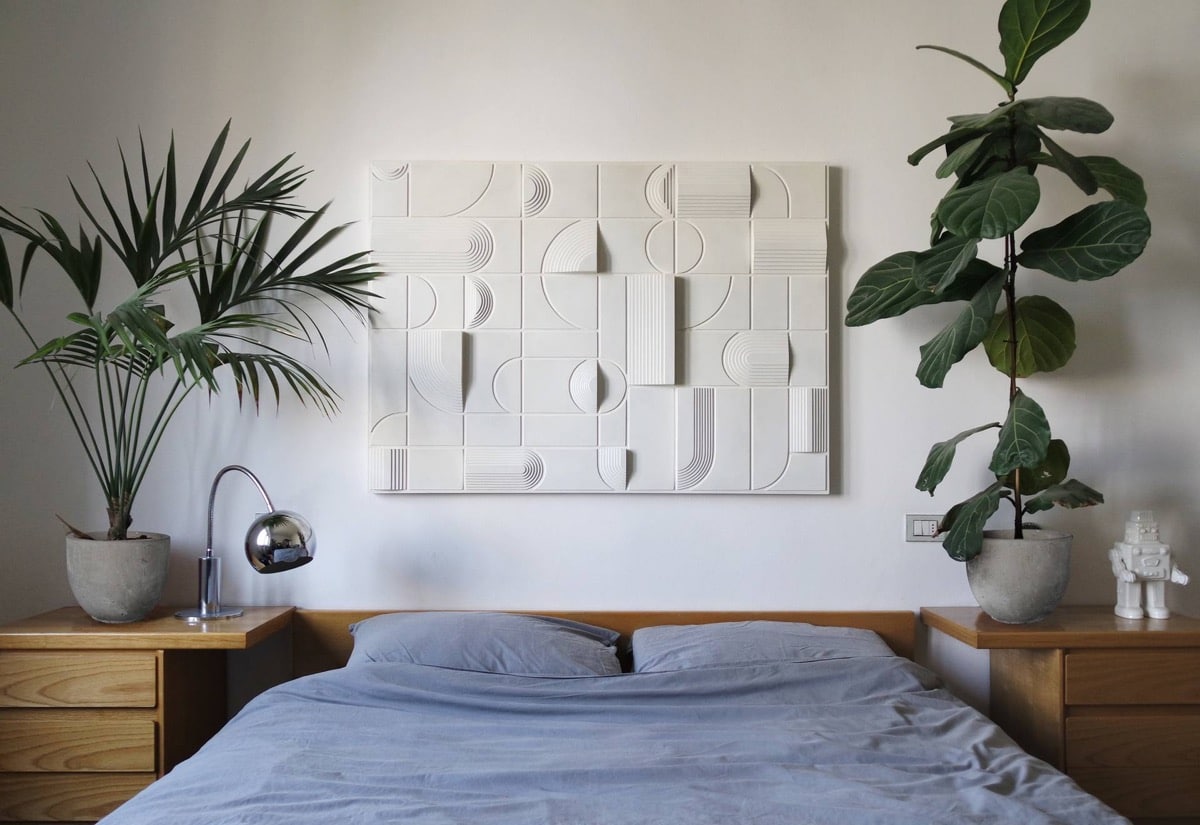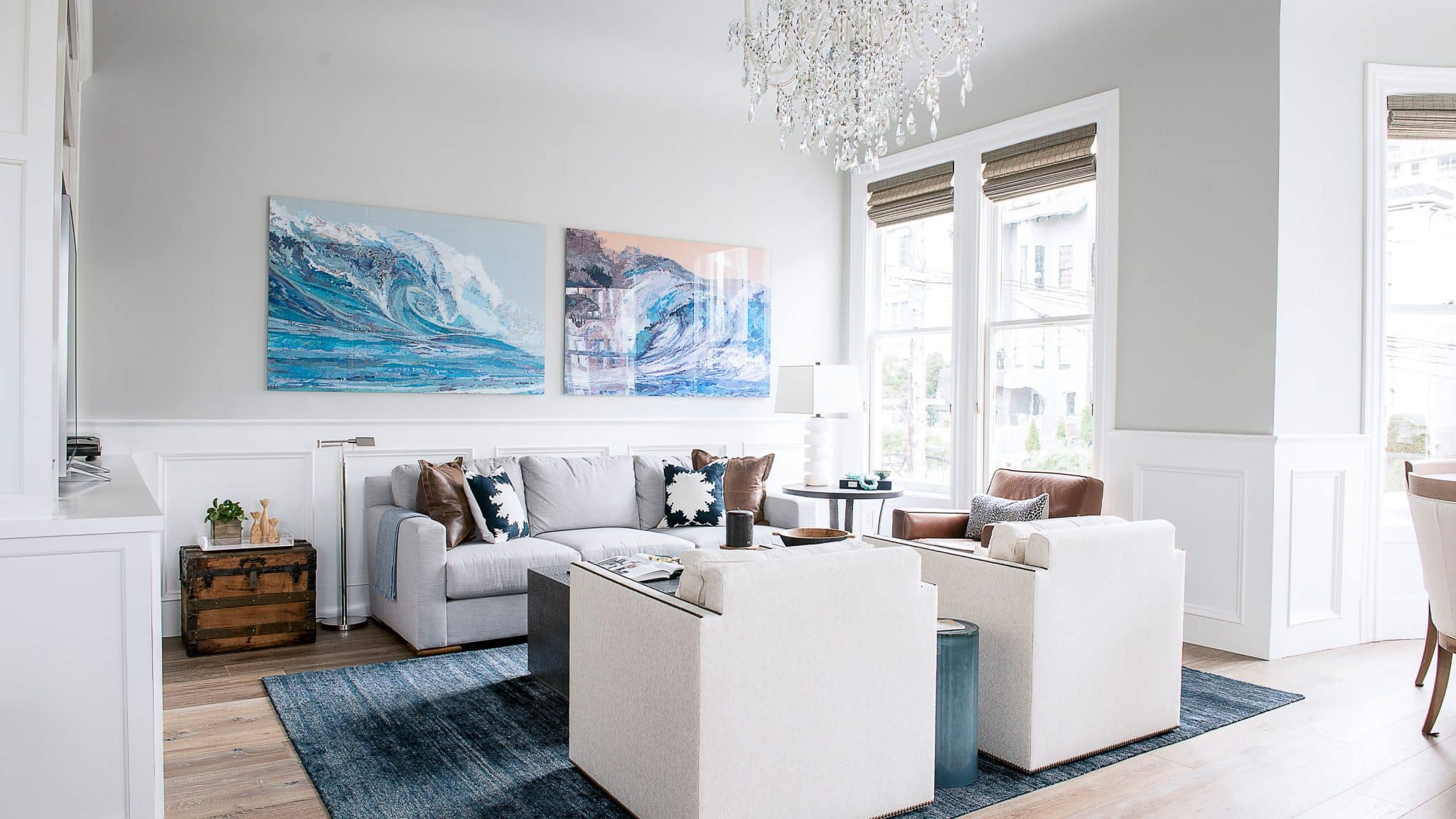How to Paint Upholstery and Keep It Soft: A Complete Step-by-Step Guide
I’ll show you how to give your old furniture a new life without spending too much money.
When I first discovered painting upholstery, I was amazed at how it could update worn-out chairs, sofas, and ottomans while keeping their soft, comfortable feel.
I know what you’re thinking – won’t paint make the fabric stiff? That’s what I thought, too.
But I’ve learned that with the right methods, your painted upholstery can stay as soft as ever.
In this guide, I’ll walk you through exactly how to paint your furniture fabric effectively, from picking the right materials to applying the final touches.
I’ll teach you my step-by-step process to update your furniture, blend colors properly, and maintain the fabric’s texture.
Let’s make your old furniture look fresh and inviting again.
How to Paint Upholstery: Step-by-Step Guide
Before starting, make sure you have all the materials and tools prepared. Follow the steps carefully for the best results when painting fabric upholstery.
Tools and Materials Table:
| Item | Purpose |
|---|---|
| Smooth Cotton/Poly Blends | Suitable fabric for painting upholstery |
| Martha Steward Fabric Medium | Mixed with acrylic paints for fabric painting |
| Folk Art Fabric Medium | Alternative fabric medium for painting |
| Sherwin Williams Emerald Latex Paint (Dover White, Satin Finish) | Main paint used for the project |
| Liquid Fabric Dye | Alternative to paint for textured fabrics like velvet |
| Spray Bottle or Paint Sprayer | For dampening the fabric before painting |
| HomeRight Finish Max Fine Finish Sprayer | Recommended paint sprayer |
| Chalk Reel | Marking straight lines |
| Paint Brushes | For applying paint in detailed areas |
| 320 Grit to 400 Grit Extra Fine Sandpaper | For sanding between paint coats |
| Rag or Sponge | For rubbing the fabric after the first paint coat |
| Painter’s Tape | Protects non-paintable areas of furniture |
| Safety Gear: Respirator Mask | Protection from spray paint fumes |
Step 1 Assess Your Furniture and Select Appropriate Materials
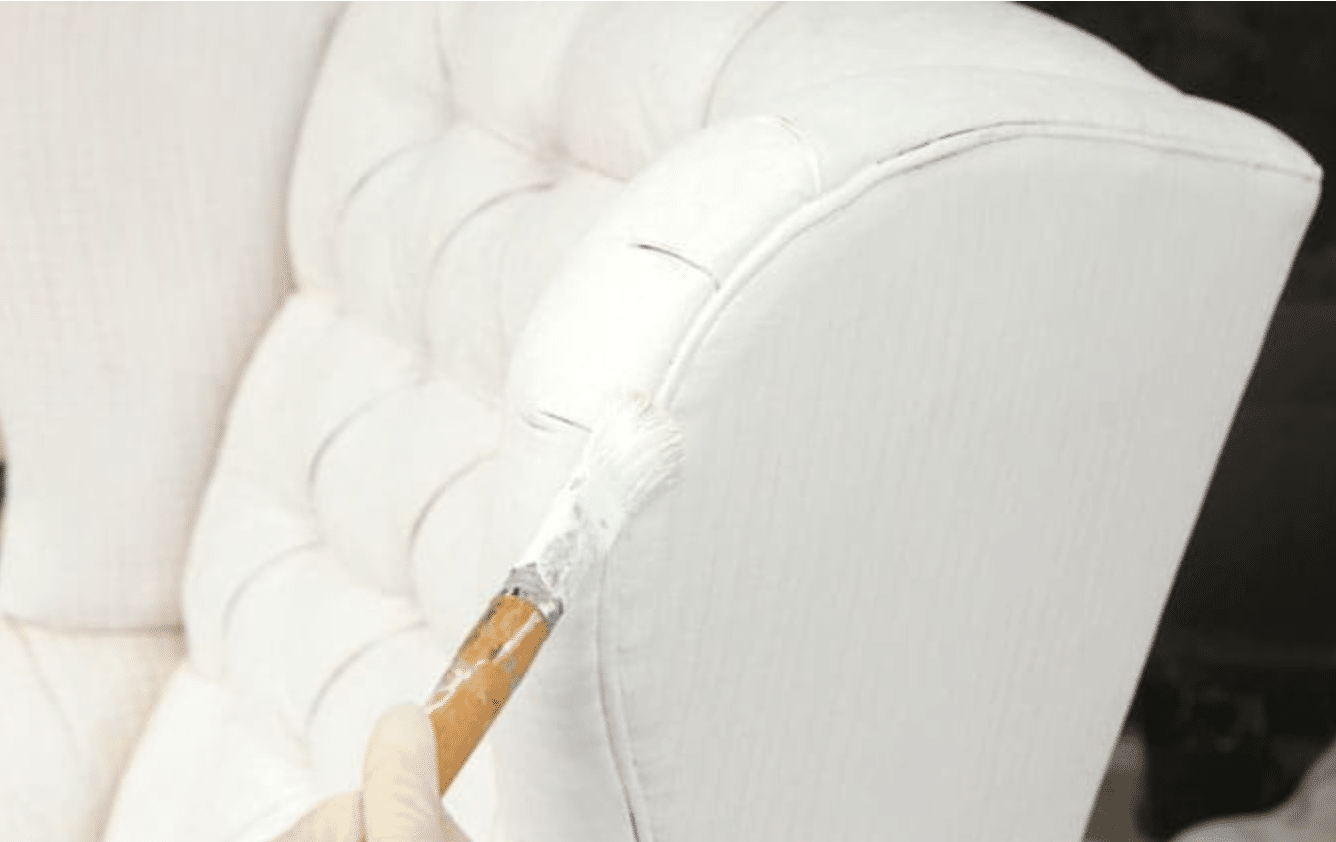
- Suitable Fabric Choices: Smooth cotton or poly blends are ideal for upholstery painting. Avoid using thick, textured fabrics such as velvet, as they are harder to paint over.
- Conduct a Test Run: Before starting your main piece, try painting a similar fabric sample (e.g., a matching pillow or swatch). This allows you to familiarize yourself with the process and the final result.
Step 2 Prepare Your Furniture for Painting
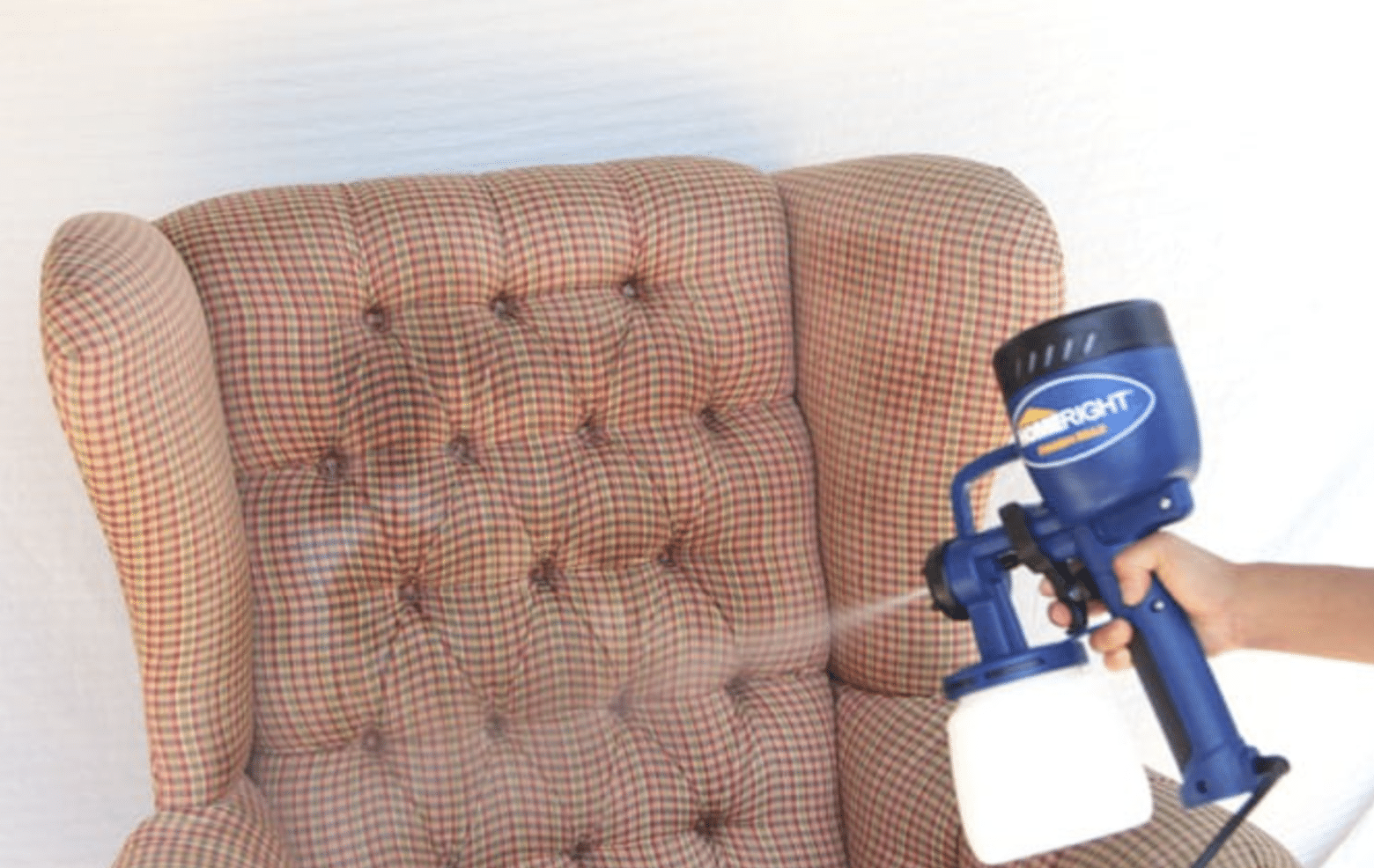
- Clean the Fabric Surface: Start by thoroughly vacuuming the upholstery to remove any dust or debris from crevices. Spot-clean any stains to avoid discoloration once the paint is applied.
- Protect Non-Paint Areas: Use painter’s tape to cover sections of the furniture that should remain unpainted, such as the legs or other parts.
- Moisten the Fabric: Lightly spray water over the upholstery until it is damp. This helps the first coat of paint absorb better into the fabric fibers.
Step 3 Begin Painting with the First Layer
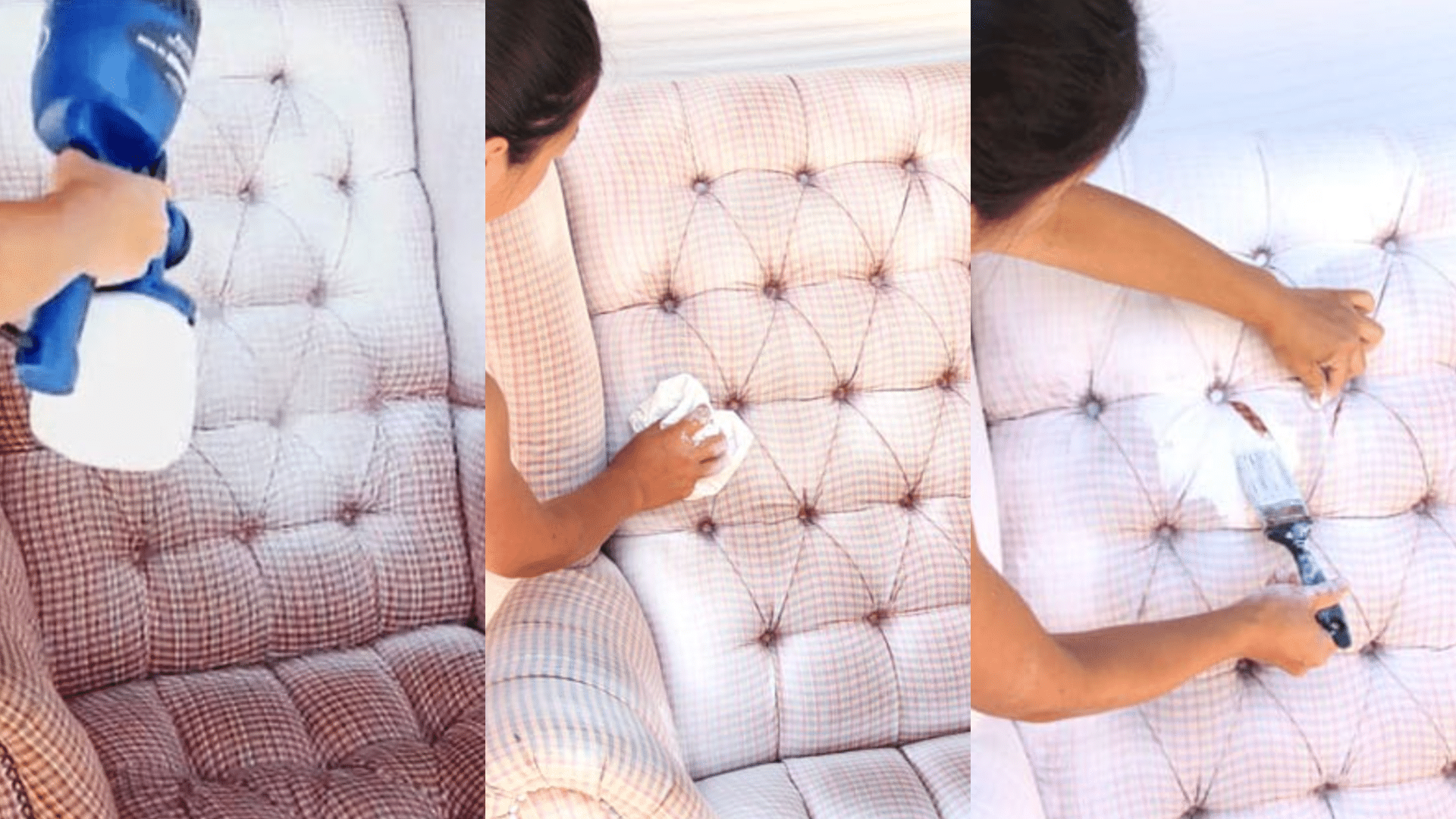
- Mix and Thin the Paint: Dilute the paint in a 3:2 ratio (3 parts paint to 2 parts water) for a smoother application. For best results, the mixture should be as thick as pancake batter.
- Apply the Paint: Using a sprayer or paintbrush, apply the first layer of paint to the damp fabric. Use a brush for intricate areas to ensure complete coverage.
- Work the Paint: After applying the first coat, rub the surface with a cloth or sponge to help the paint penetrate the fabric for an even finish.
Step 4 Smooth the First Coat
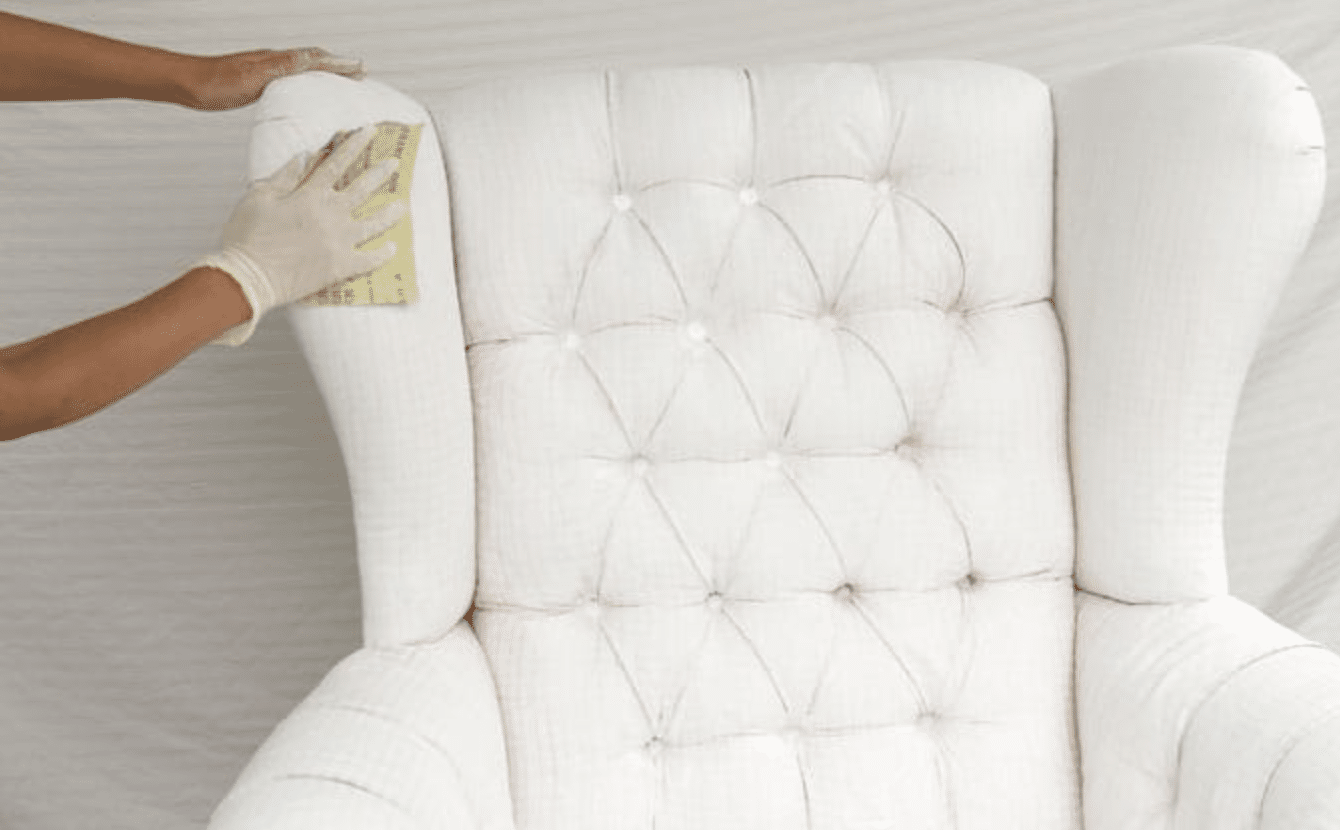
- Allow to Dry and Sand: Once the first coat has dried, the fabric may appear stiff or rough. Gently sand the painted areas with fine grit sandpaper (320 to 400 grit) to smooth the surface and maintain softness.
Step 5 Continue Painting and Smoothing
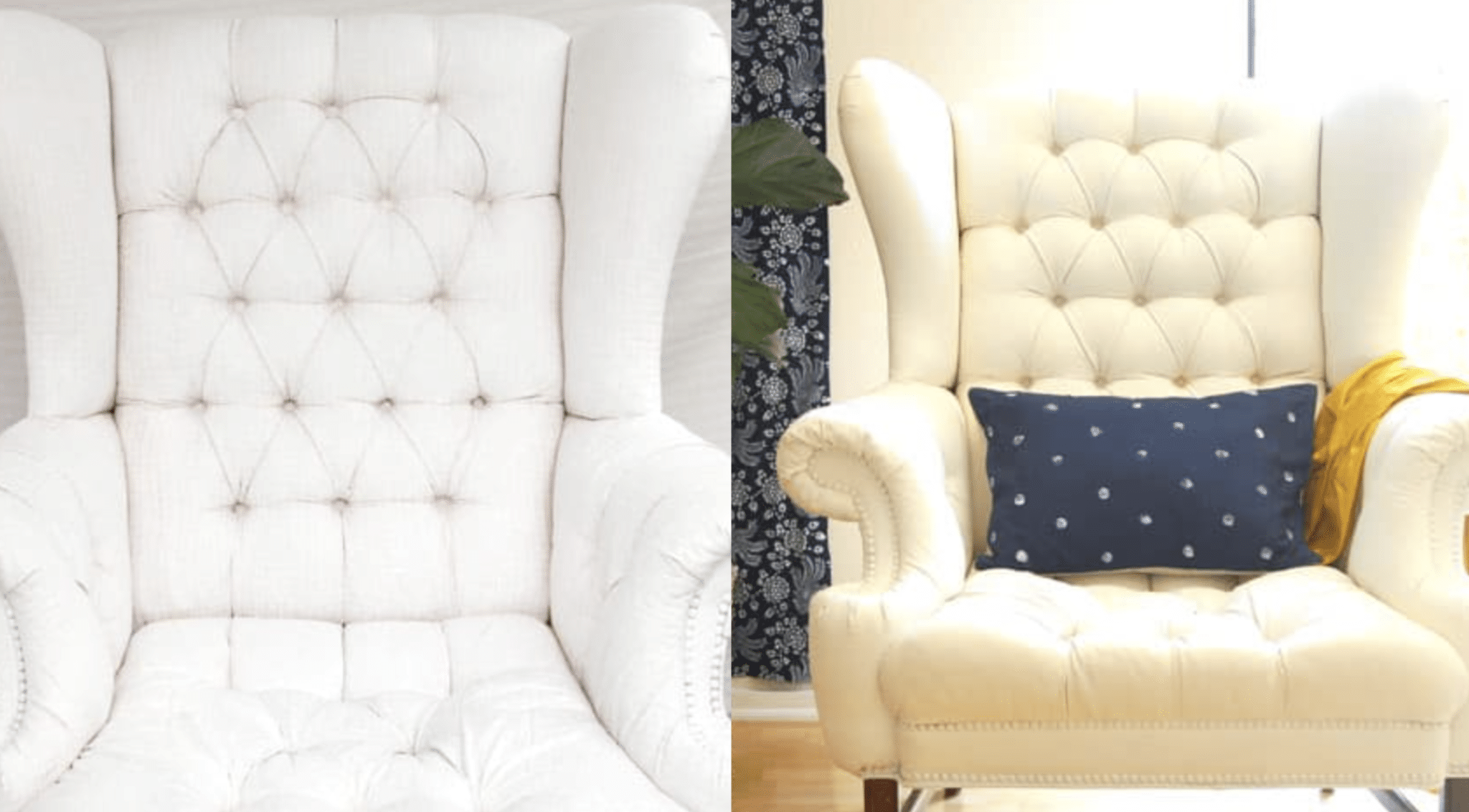
- Repeat the Process: Add a second coat of paint, allow it to dry, and sand again. Repeat this cycle of painting and sanding until you are satisfied with the coverage and texture. Typically, four coats will give a refined finish.
Following these steps will help you transform your fabric furniture with a painted finish while maintaining a soft texture.
How to Choose the Right Paint for Your Project
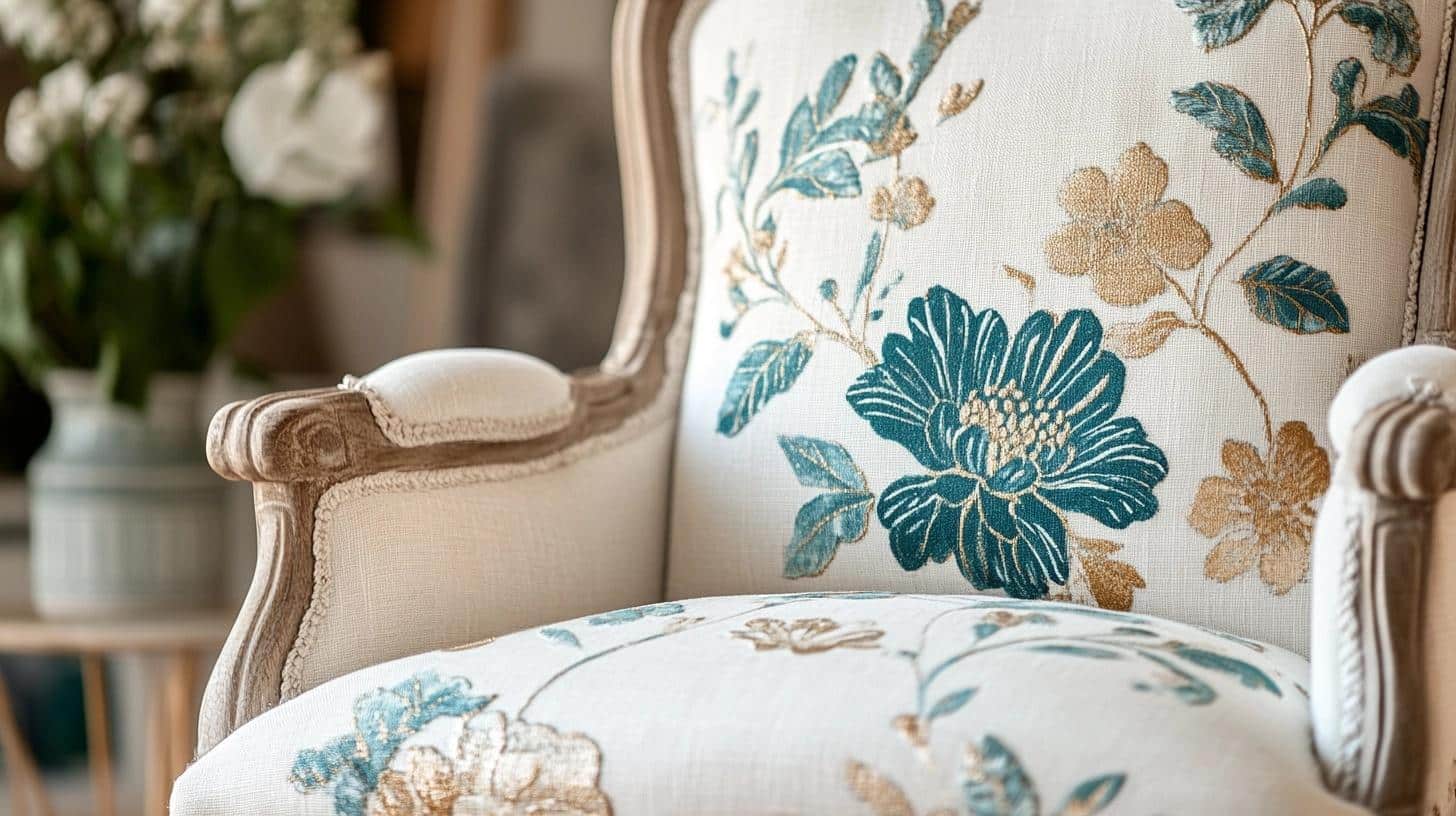
Make your paint selection simple and spot-on with these practical tips:
Check Your Base Material
- Start with your fabric’s material tag and texture – this guides your paint choice. Test water absorption on a hidden spot. Quick absorption means easier painting.
- Dark fabrics need more coats than light ones. Check if your fabric is tightly woven or loose – this affects how the paint will take hold.
Size of Your Project
- Small items (cushions, chairs) do best with fabric paint. It’s easier to control, and you won’t waste product.
- Large pieces (sofas, sets) need chalk paint or acrylic with textile medium. These give better coverage and value on big surfaces.
Daily Use Matters
- Frequently used pieces need tough paint with sealant. Pick washable options for kids’ furniture.
- Display-only pieces can use any paint type since durability isn’t the main concern.
Consider Your Budget
- Chalk paint: Costs more but needs fewer coats
- Fabric paint: Best for small areas, gets costly on large surfaces
- Acrylic with medium: Most cost-effective for big projects
Test Before You Commit
- Paint a hidden spot and let it dry. Check the feel and coverage.
- This test shows if you need primer and how many coats to plan for.
Best Paint Options for Your Upholstery Project
| Type of Paint | Pros | Cons | Best For |
|---|---|---|---|
| Acrylic Latex Paint | – Durable and flexible – Low VOC – Good coverage |
– Can stiffen fabric if not properly diluted | – General upholstery, especially smooth fabric surfaces |
| Fabric Paint with Medium | – Keeps fabric soft – Provides long-lasting results – Works well with various fabrics |
– More expensive than regular paints – Limited color selection |
– Cotton, polyester blends, and light fabrics |
| Chalk Paint | – Easy to apply – Gives a vintage look – Can be sanded for texture |
– Requires wax finish for durability – Limited flexibility after drying |
– Upholstery with a vintage or distressed look |
| Liquid Fabric Dye | – Penetrates fabric without stiffening – Great for textured fabrics – Transparent finish |
– Best for light-to-dark color changes only – May not cover stains or patterns effectively |
– Textured fabrics like velvet or thick woven fabrics |
| Spray Paint for Fabric | – Quick application – Even coverage on intricate designs |
– Can be difficult to control – Limited color options |
– Small or intricate upholstery pieces |
| Acrylic Craft Paint with Fabric Medium | – Customizable colors – Affordable – Versatile for different fabrics |
– Can require multiple coats – Needs precise mixing for best results |
– Various fabrics, custom designs, and DIY upholstery projects |
Expert Tips for Keeping Your Painted Upholstery Comfortable
Maintaining the softness and comfort of your painted upholstery requires careful attention throughout the painting process. Here’s how to achieve flexible and comfortable results:
Key Steps for Soft Results
- Apply Light Coats and Sand: Begin with light, diluted coats of paint rather than a single thick layer. After each coat, lightly sand with fine-grit paper to smooth out stiff spots and maintain flexibility.
- Fabric Softener Mix & Dry Brush: For the final coat, mix a small amount of fabric softener with the paint (1:8 ratio). Once dry, use a dry brush to break up any remaining stiffness on the surface.
- Fully Dry and Massage Fabric: Ensure each layer dries completely before applying the next. While the fabric is slightly damp, gently massage it to keep it soft and prevent hardening.
After-Care Tips
- Proper Curing: Keep the painted item in a cool, dry place while it cures to avoid moisture buildup, which can affect the finish.
- Regular Brushing: Use a soft-bristle brush to gently maintain the fabric’s surface on a weekly basis, keeping it smooth and soft.
- Prevent Heavy Pressure: Avoid placing heavy items on the painted upholstery as this can cause the fabric to harden or crack.
- Use Protective Layers: Place thin blankets or throws over high-use areas to prevent wear and tear while maintaining the fabric’s appearance.
Quick Fix for Stiff Spots
- Light Water Mist: If you notice stiff areas, spray them lightly with water.
- Work the Fabric: Gently work the fabric between your fingers to soften it.
- Natural Drying: Allow the fabric to dry naturally, repeating the process if needed.
Final Tip
Patience is key. Rushing through the painting process often leads to a stiff and uncomfortable surface. Taking the time to properly apply each coat and care for the fabric ensures a soft, flexible, and beautiful finish.
Conclusion
I hope this guide helps you see that painting upholstery isn’t as tough as it seems. With the right paint, proper prep, and a bit of patience, you can make your old furniture look wonderful again.
I’ve used these methods on countless pieces, and I’m always excited by the results.
Remember – start small, test your technique, and take your time with each step. Your first project might not be perfect, but that’s okay. Each piece teaches you something new.
Do you have questions about your furniture project? Drop them in the comments below.
I’d love to see your before-and-after photos, too! If you find this helpful, check out my other guides on furniture fixes and budget-friendly home updates.
Ready to start? Your next great furniture piece is waiting.
Frequently Asked Questions
Can I Paint Any Type of Upholstery Fabric?
Most fabrics work well with paint, but natural fibers like cotton, linen, and velvet take paint best. Avoid very smooth or slick materials like leather or vinyl.
Will the Paint Rub Off on Clothing?
Not if done right. Once the paint dries fully and you’ve added a proper sealant, it stays put. Allow 24-48 hours of drying time before regular use.
How Durable is Painted Upholstery Over Time?
With proper prep and sealing, painted upholstery lasts 2-3 years with normal use. Regular cleaning and careful use help extend its life. Touch-ups might be needed in high-wear spots.
Is It Safe for Households with Children and Pets?
Yes, after the paint fully cures. Choose non-toxic, water-based paints, keep pets away during painting and drying, and clean spills quickly to protect the finish.
Can I Change a Dark Fabric to a Lighter Color with Paint?
Yes, but it takes more work. You’ll need several thin coats and likely a primer first. Expect to use more paint than when going from light to dark.

